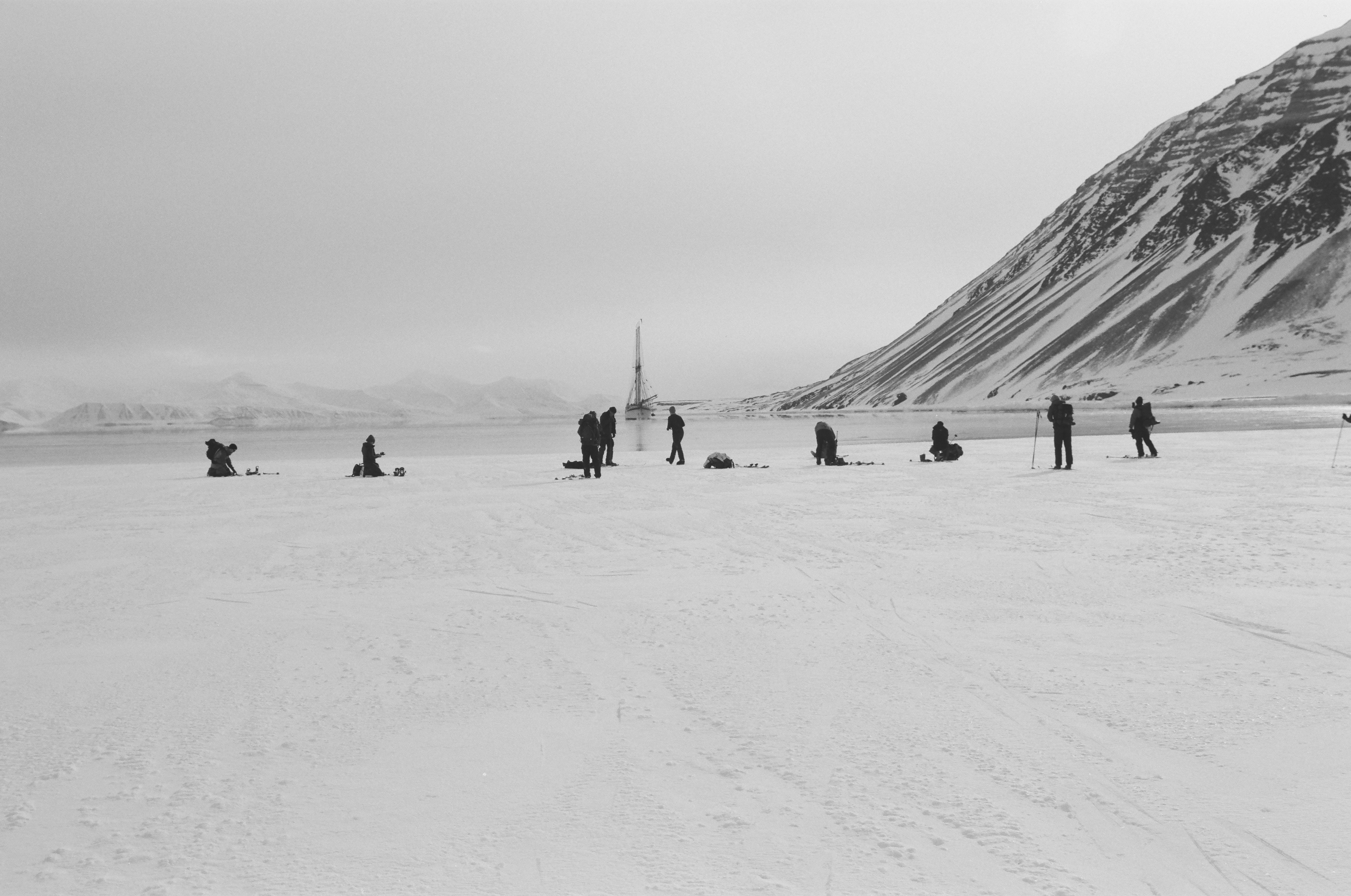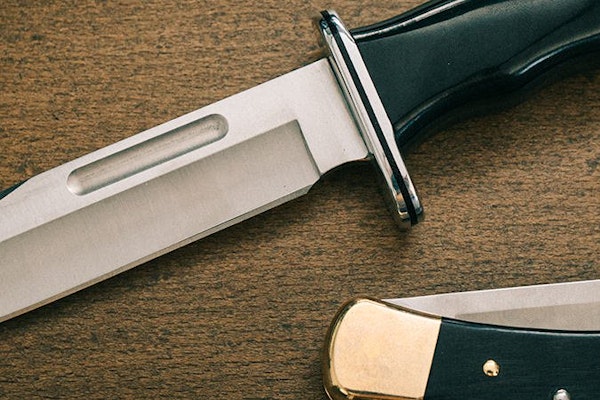Last April, we stood aboard a Danish three-masted sailing ship admiring the variety of freshly-tempered Buck knives on the table in front of us. There was a heavy-duty Pathfinder, the justly famous 119 Special, a 102 Woodsman, a slim TRX, an 8” chef’s knife, along with a collection of classics I knew from living in Alaska and growing up in Pennsylvania.
The owner of the Linden, Bjorn, seized on the largest of the Specials, unsheathing it to admire the gleam of the blade. Then came the captain of the ship, Rasmus Jacobsen, who settled on the Folding Hunter, which he hoped to use for ptarmigan, and the Pathfinder. Sixteen, the 23-year-old Danish First Mate, who had spent time in Greenland with the Inuit learning to hunt polar bear, landed on the TRX and Pathfinder, while I happily lashed the leather sheath of the 102 Woodsman to my dry bag.
"Having these knives nearby, attached to packs and belts, and taped to suspenders, would be critical to our success."
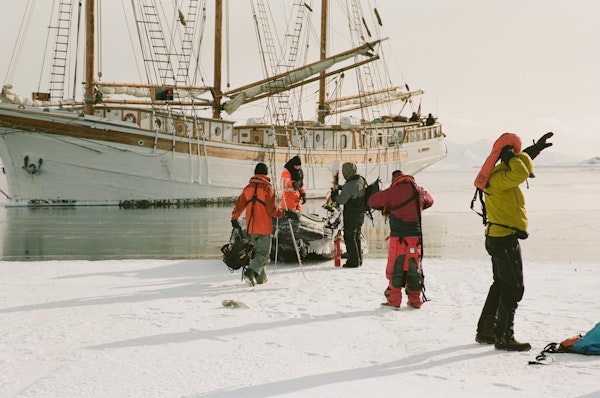
Before my departure from Sitka, I immersed myself in the lore of Hoyt Buck, the blacksmith’s apprentice who seeded H&H Buck & Son, America’s most legendary knifemaker. That Hoyt’s work as a millwright translated to equipping our crew as we conquered the Barents Sea, and Svalbard, boggled my mind.
Ahead of us we had a four-day crossing, if the weather cooperated. After that, 10 days in Svalbard, the constellation of nine islands administered by Norway but also controlled by Russia, exploring abandoned Russian settlements, trapper’s cabins, and skiing glaciers. Having these knives nearby, attached to packs and belts, and taped to suspenders, would be critical to our success.
As I retreated to my quarterberth, I thought about Hoyt Buck back in the 1920s, crouched over a collection of grub hoes and rasps in Mountain Home, Idaho. Could he have imagined, as he tempered his blades, allowing them to maintain their sharp edge, that a Svalbard expedition would be taking the result of his own explorations north into the Arctic?
Right about the time he did his work, Norwegian trappers, some 4000 miles to the northwest, hammered nails into their driftwood cabins. Naturally, knives played central roles in their success or failure: they used the blades to skin polar bears, gut a cod, or ladle out seal oil to be used to cook up a chunk of walrus liver. These trappers required the type of knives Hoyt Buck was setting out to create. It would take well over a century for Hoyt’s creation and Svalbard to meet. But meet they did, outside the galley of the Linden.
One by one the Swedish and Danish crew began appearing in their navy blue monkey suits sporting Ranger and Folding Hunter knives, ready for action.
On the morning of April 18th we made loose from the harbor in Tromso, then jogged north through islands, dropping anchor that evening in the center of the bay at Kvaloyvagen, on the fringe of the Barents Sea. A switch of the wind brought the scent of fish drying in racks along the coast. Siggy, as we had started to call Sixteen, emerged with his expedition boots, setting them atop the pilot house. He used his TRX and Pathfinder like an awl to punch a hole through thick leather, then did minor surgery on the laces to get them to his liking.
As Rasmus assigned chores, I joined Kat and Agnes, part of the sailboat crew, from Denmark and Sweden respectively, to cut line for gaskets to fasten the sail to the mast - known as reefing the mainsail. Kat patiently taught me how to thread floss-thin line along the ends of the gasket to tie it off. My screaming 119 Special, which I had come to call Smithy for no reason in particular, easily cut through the nylon line, while the orange 112 TRX knife came in handy nipping the floss-thin line to finish the bitter ends.
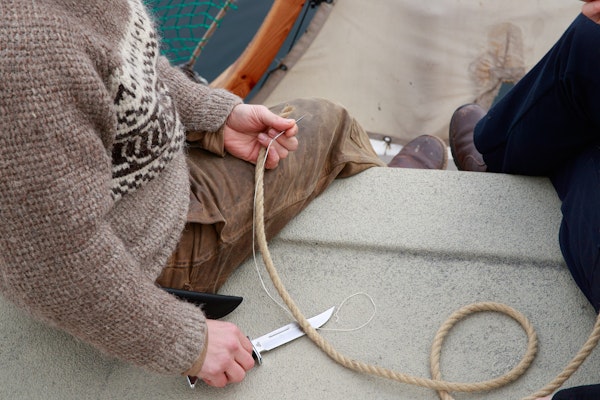
After finishing up with the gaskets I turned the blade of my 119 Special over in my palm, the blade catching and releasing the lowering but never setting sun. Soon the blade would be in the Arctic, a long way from San Diego, the Ma-and-Pa shop along the side of a house where Buck had its origins. As I climbed into the rigging, breathing in the salt and cold air, along with occasional gusts of cigar smoke from Justin, the Special Forces member of our crew who had literally taught the Marines to climb mountains - I couldn’t help but feel proud to have the Made in the USA blades aboard.
With the Special on my belt, I went up into the rigging, clipping off into the Crow’s Nest. I turned north in the direction of our destination, Svalbard, and thought long and hard about the possibility of getting sea sick. Beneath me the small forms of Kat and Agnes finished wrapping the sails. Other members of the crew coiled line and folded canvas. Despite my age of 44 - or perhaps because of it - I was filled with a desire to unsheathe Smithy, grab a line and swing over the deck slicing through canvas and rigging and anything else in sight, all the while screaming a blood-curdling cry.
Then I heard the mosquito whine of a drone. Jordan had his contraption, which he called Murray, in the air taking a 360 of the boat. In a moment my fantasy of swashbuckling pirate swinging through the rigging shifted to drone killer of the skies. I just wanted to take my bowie-style clip point to its highest potential use, and ground Murray with a single, deft swipe.
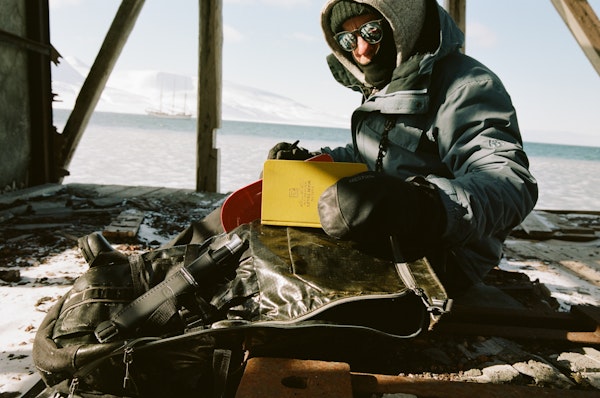
The following morning as we set out beneath sunny skies onto the Barents Sea Jordan delivered a class on the quarterdeck considering the finer points of knife-sharpening. As the Danish flag snapped in the southwesterly, the crew crowded around his drawings of beveled edges. He put them to work, then quietly excused himself to throw up off the bow. When he returned he reported that he had thrown up onto the head of a minke whale calf enjoying the waves off our prow.
“What are the chances?” he asked, smiling gamely.
We took shifts at the wheel, four hours on, eight hours off. On one of our shifts, as I tooled with my Special, Jordan explained to me that Buck’s “Forever” warranty does not cover dropping the blades into the Barents Sea. As we moved in the direction of mythical Svalbard I cut threads from my anti-exposure suit with my Special. How strange to examine the bright thread of a finished edge wondering what in the future might dull it, what textures lay ahead in its future.
Three days later Jordan gave a hearty “Land Ho!” at the site of peaks to our east. We threaded a maze of icebergs, and hooted our way through fog to enter Isfjorden, taking refuge in a small bay near the entrance. No sooner had we dropped anchor than Siggy slipped his .308 into his pack for a seal hunt. I begged to come with. We lowered the charcoal Zodiac into the sea ice, all the while scanning the black water for movement. As I descended Siggy affirmed that we both had knives for skinning seals should it come to that.
As we chugged through the snowy landscape, Siggy glassed the coast for ringed seals. The larger variety, bearded seals, were out of season. He nosed the Zodiac onto sea ice, and I realized with horror we would be walking on this. Just four centimeters is all that’s required, Siggy tells me. As we go we find a single bearded seal, but nothing to work our knives.
The next day, our first sunrise in Svalbard, we dropped our skis into the Zodiac for a day of skinning and skiing. No sooner do we reach land than Jordan’s ski pole shattered. (Jordan’s skis had been lost somewhere between San Francisco and Tromsø, causing him to end up with inferior poles.) Luckily I had my Special, and I sacrificed its bright edge to shave off ribbons of graphite, whittling the pole until it fit the handle.
Welcome to Svalbard, Buck.
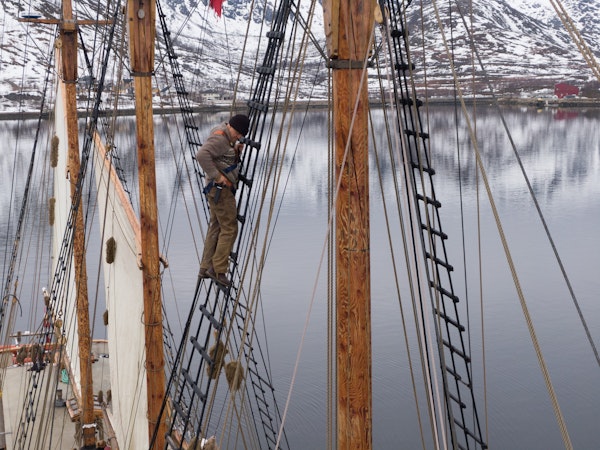
From Pyramiden we went to Grumant, in Coles Bay, an earlier Russian settlement. While the rest of the group shimmied up a mountain Jordan and I picked our way through buildings once inhabited by coal miners and their families. Corrugated cement roofing and reams of wire heralded construction never completed. With the tip of my Special I scraped soot from the wall, mint-green paint beneath.
On the second floor of one of the buildings we discovered the “PX Room,” a makeshift First Aid station with matches, a lighter, firestarter, electrical tape, bullets, maps, soup, pasta, and an unopened bottle of soy sauce on the shelves. Following an extended conversation brushing on economics, selfishness, and the philosophy of ethics, we decided to leave a 110 TRX in the room PX Room - then took bets on how long it might last before someone made off with it.
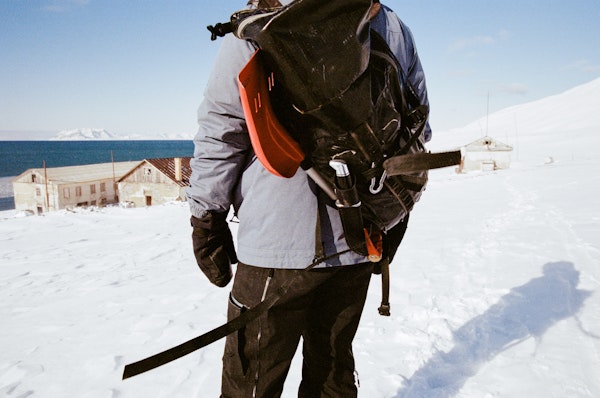
On our final evening aboard Linden, tied to docks in Longyearbyen, Kaya, the Danish cook on the Linden swung open the Dutch door on the galley, and played Sia as she chopped cucumbers to go along with stir fry made from Rasmus’ ptarmigan. The rhythmic sound of the blade knocking against the board was accented by waves lapping against the wooden hull. Sipping a beer on deck, considering a walk into Longyearbyen later that evening, I once more took out my Special, and delivered a heartfelt thank you for making the trip intact.
At that point, standing on deck, after just under two weeks in the Arctic, I believed I had discovered the same secret Hoyt Buck came across 110 years before: keep on moving. Especially in cold places, like Mountain Home or the Arctic. After all, the movement keeps you warm, experimenting, seeing what might work in the next moment. To do this right requires a knife near at all times, preferably a good one, kept damn sharp. Honed for the next adventure at hand.
